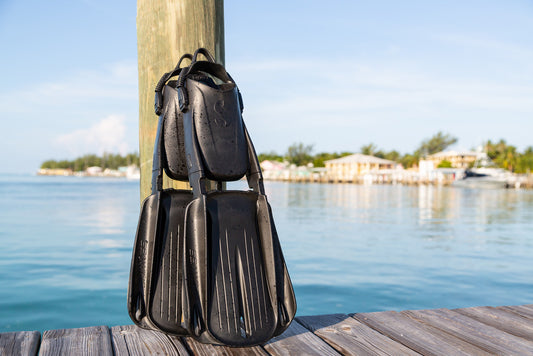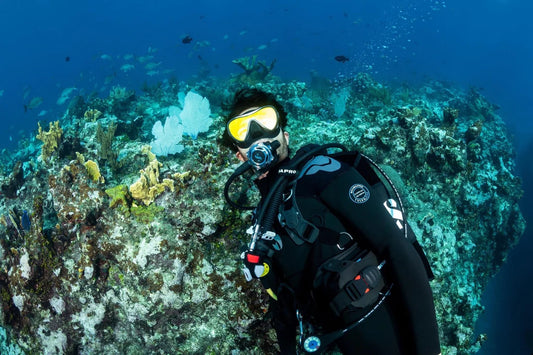On the second dive of the first day of a diving trip to the Bahamas, Daily Telegraph journalist David Graves drowned and died. It was a terrible tragedy. I was involved in the recovery of his body, the attempts at resuscitation and travelled back to the UK to explain to his wife and children the circumstances surrounding the loss of a husband and father. Although there were many theories and a drawn out Court case, I believe I know what happened from the evidence of my eyes and the telling record of his dive as logged by his dive computer.
It is my belief that he left the escorted group of divers he was with during the last moments of the dive and went off on his own to take one final photograph. Sadly, it was to be his last.
He ran out of air and, only around 18m deep he struck out for the surface. The Suunto computer he was wearing did not record the time he spent between 2m and the surface but it recorded everything else and whether he made it to the surface or not, he dropped and drowned for sure.
David Graves was a recently certified diver who had made a previous dive trip out to Malaysia so he was not totally inexperienced but why did he drop? When we recovered his body all his equipment was still in place. That is to say he was still wearing his weightbelt. If he had thought to drop his weightbelt he would still be alive today.
I admit that there have been times when, distracted by an underwater photography subject, I have cut it very fine and arrived at the surface without enough pressure in my tank to inflate my BC. I've inflated it orally instead. If David Graves had reached the surface he could have done that but I am inclined to think that by this point he'd got into a panic and might have lost all sense of reason. He might have tried to use the direct-feed control but of course it would not have worked if his tank were empty.
So think about dropping your weightbelt in an emergency. You should not have to do this, if you are correctly weighted to be neutrally buoyant, in order to swim up to the surface but you might need to do it once you are there. Of course, dropping your weightbelt has the effect of making you buoyant so you don't really want to do it at depth and enjoy an out-of-control ascent. You must also be careful not to drop it on divers that may be below you and for this reason practicing this act is discouraged at crowded inland dive sites.
Before BCs, and their forerunner the ABLJ, were invented, dropping the weightbelt was enshrined in diver training. It was the only way to make it to the surface during an emergency. Correct use of a BC allows for neutral buoyancy at any depth and one only has to swim up a little for the gas within the BC to expand and start to become positively buoyant. You then need to jettison some air for reasons of controlling the speed of ascent. For this reason, teaching dropping the weightbelt tends to be glossed over.
Not only that but people are reluctant to risk losing their weightbelts, understandably so. I was once out in the far reaches of Indonesia and was using a brand new BC. I left the dive boat and headed down to the seabed around 12m below where I injected a little air into my BC but to my horror the corrugated hose parted from the direct-feed control. I was not over weighted and swiftly headed back to the surface only to see the dive boat speeding away with the crew totally oblivious to my waving and unable to hear my shouts over the noise of the boat's engine.
What to do? I could have dropped my weightbelt but in such a remote place I knew we'd have trouble getting more lead to replace it. I couldn't keep the BC inflated. Any air I blew in through the now exposed end of the corrugated hose simply siphoned out again as soon as I submerged. I was near a small island and opted to go back to the bottom and walk to its beach rather like the pirates in Pirates of the Caribbean. Once the dive boat returned later, a couple of cable ties on the BC and a coating of After Sun lotion on me proved to be a solution.
So how to drop a weightbelt? It used to be the last thing you put on in the old days. That was so that it was never fouled by other straps passing over it. Today, it's often put on before the BC and tank.
It is not sufficient to simply flip the buckle and let it fall. You need to be sure it falls away cleaning from you without snagging. Think about dropping you weightbelt and its ramifications. Avoid being over-weighted so that you can be neutrally buoyant at any depth but know that you can always drop your weightbelt once you are near to the surface. Unhitch it and swing it away from you and once it is clear, drop it! It could be a matter of life and death.
Happy Diving - John Bantin






